Tough love
Synopsis : ‘Nature knows best’ sometimes doesn’t apply to your bees and a responsible beekeeper must intervene with a little tough love to rescue the situation.
Introduction
Beekeeping involves quite a lot of responsibility. It’s not a ’fit and forget’ pastime. You need to think about others that you (and your bees) share the environment with.
Or, at least, you should.
If you want an apiary in your small urban garden you need to consider the impact it will have on the neighbours. If your colony develops American foul brood you have a responsibility to inform the local bee inspector who will notify the National Bee Unit. They, in due course, send one of those dreaded {{1}} ‘Foulbrood Alert’ emails to other registered beekeepers in the immediate area.
But your responsibilities don’t end with the civilians (i.e. non-beekeepers) and beekeepers around you.
Arguably they also apply to the other pollinators your bees will be competing with in the environment. Will a quarter of a million generalists (your bees) threaten the survival of the – often more specialised – local solitary or bumble bees? {{2}}
And, just when you thought I’d run out of responsibilities to remind you about, there’s the responsibility you have to your bees.
They’re not pets, they’re not domesticated, but they are at least partially dependent upon us. For shelter, for food (at times) and for their health and wellbeing.
And that sometimes means beekeepers have to take tough decisions …
Tough love
The phrase tough love was coined by Bill Millikan in his 1968 book of the same title. It’s usually taken to mean the ’act of treating a [person] sternly or harshly with the intent to help them in the long run.’
I put ‘person’ in brackets because – on a beekeeping blog – I’m talk about bees.
Although some beekeepers love to dabble with their colonies, the reality is that – for the most part and for much of the season – they do a pretty good job of looking after themselves.
Our interventions are really for our benefit – checking for queen cells so the workforce doesn’t vamoose, adding supers etc.
However, things can go wrong. Either we mess up, or there’s some bad weather or bad luck or bad karma. Whatever the cause, the colony may be left in a state in which their long-term survival becomes much less certain. At that point the beekeeper may have to – or should – make a pragmatic decision that resolves the situation.
And that decision may have to involve some ‘tough love’.
Not intervening may risk the total loss of the colony. Intervening, even though it may involve some sacrifices, may well save the colony.
This topic is timely as we’re reaching that point of the year where active beekeeping must stop and the, seemingly-interminable, off-season starts. Colonies that look in a precarious state now may well not make it through to the spring. Indeed, if they look really precarious now, they might not survive the first few frosts.
However, similar pragmatic interventions may be needed at other times of the season. In the following paragraphs I’ll illustrate a few scenarios and possible solutions.
Failed queens
The queen is, or should be (!), the longest-lived bee in the colony. Many live a couple of seasons, and some significantly longer.
But all good things must come to an end, and at some point she’ll run out of sperm, or enthusiasm or whatever. Usually the colony realises things are amiss well before the beekeeper and, quietly and efficiently, stages a bloodless coup and supersedes her.
A lot of supersedure happens in late summer and early autumn. The first you know of it is that you find an unmarked and unclipped queen the following spring.
Very late season virgin queens
‘Very late’ is a subjective term and depends on your latitude, the number of drones that are still about and the weather. Here in Scotland my colonies have been turfing out drones for almost a month and it’s already feeling quite autumnal. Further south things might be very different.
If you do find a virgin queen scampering about the hive (very) late in the season you have a dilemma. Do you cross your fingers and hope she gets mated in the next few days, or do you accept that it’s unlikely, sacrifice her and unite the colony.
Many beekeepers do the former.
Ever the optimist …
But let’s be realistic for a minute. How long since the queen emerged? If the weather has been poor for a fortnight she might already be going a bit ’stale’ (and if the weather has been poor you can be pretty certain that drone numbers in the area will be seriously depleted).
Is there a good chance she can get out in the weather predicted in the next week? And is there then sufficient time for her to lay enough brood to populate the colony with good numbers of winter bees that will ensure its viability until spring?
If she’s already ageing, if the weather is a bit dodgy, or if there’s any real doubt about the chances of success, I would always sacrifice the queen and unite the remaining bees in the colony with a nearby strong colony.
Yes … she might get mated … but if she doesn’t the colony is doomed.
Late season cast swarms fall into the same category, except they already may contain too few bees to rear lots of autumn brood.
Very early season queen failures
Sometimes – though rarely – you find a colony with a failed or failing queen very early in the season. I barely ever see these as I’m not usually opening boxes until mid/late April, but I know some beekeepers are busy at least 4-6 weeks before that.
It’s too early in the year to have any queens of your own and an overwintered queen will cost megabucks. Adding a frame of eggs/larvae is a non-starter … there are no drones yet.
But buying a new queen is unlikely to be satisfactory (aside from the megabucks that is). If the queen failed (or started failing) weeks ago – for example, she never started laying again properly after a few weeks off late the previous year – the colony will be dwindling fast and are unlikely to be strong enough to build up for the season ahead.
In my view buying a queen – or using one of your own – in this situation is not sensible. Cut your losses. Get rid of the queen if she’s still present and unite the remaining bees with another colony.
This isn’t even an example of tough love … it’s more just plain common sense and economically prudent {{3}}.
Mid-season queen failures
Sometimes you find a colony with a really patchy brood pattern. Perhaps the queen is running out of sperm, or she’s very poorly mated (with only a small number of drones).
However, in this instance it’s obvious to the beekeeper, but not necessarily obvious to the colony as they’re showing no signs of superseding her.
As an aside, it’s worth noting that there may be other reasons than a failing queen for a patchy brood pattern. A very strong nectar flow can often result in the workers backfilling cells within the brood nest … give them more supers. It’s also been reported that a spotty brood patten can be due to the colony, not the queen i.e. you transfer the queen to another colony and her laying pattern improves.
Again I’d argue that, whilst you could let events run their course, it is probably better to intervene and get things back on track. In this instance I’d cull the queen and requeen directly or unite the colony (if I was sure there was no disease). Alternatively, if I had no spare queens, I would leave them queenless for a week, knock back any/all the queen cells and add a frame of eggs from a ‘good’ colony in the hope – actually expectation – that they’d rear a better queen.
Why intervene? After all, there’s lots of the season left, the weather is good, there are ample drones about etc.
By intervening I’ve got reasonable certainty of the timing of things. If I let the bees make the decisions they might wait until very much later in the season … which takes us back to ’Very late season virgin queens’.
Laying workers
By definition, a colony with laying workers is queenless. Laying workers develop in the absence of pheromones produced by open brood (larvae).
The colony thinks it is queenright. Therefore, if you try and requeen it they usually kill the introduced queen.
One solution is to add a frame of open brood to the colony, and then add another a few days later … and perhaps one more a bit later. The brood pheromone suppresses the laying workers in the hive {{4}} and, with a bit of luck, they will rear a new queen from the last frame of eggs/larvae you added.
But they might not. And if they don’t you will have to intervene or the colony will inevitably perish.
Don’t throw good brood after bad
Over the years I’ve more of less (because I still sometimes try!) learned that laying workers are a lost cause. The resources that must be invested – in time and in open brood – are insufficient to justify the success rate.
So, time for some tough love … I remove the colony from its stand and shake all of the bees off the frames in front of other strong colonies. I discard the frames and any brood they contain (this will almost all be bullet-shaped drone pupae in worker cells).
The brood will perish as will some of the bees you shake out … but they were doomed anyway {{5}}.
Do not unite a colony containing laying workers with a queenright colony. The former thinks it is queenright … that’s not going to end well. I would expect the queen in the recipient colony to be killed {{6}}. For similar reasons, if I only had two hives and one had laying workers, you risk the queen in the ‘good’ hive if you shake them out.
Varroa-infested colonies in midseason
I’ve discussed this recently so will be brief.
If you have a colony heavily infested with mites in midseason (let’s not discuss why this happened) you could treat them with a suitable miticide, accepting that the treatment period is likely to be protracted and it may even preclude adding honey supers {{7}}.
Remember, the majority of the mites will be busily munching on sealed brood. You either need to use a miticide that permeates the cappings – go back and read the last footnote – or you need to treat for at least a complete brood cycle (and usually longer).
Alternatively, you can conduct a shook swarm on the colony and then treat with a vaporised (which would be my choice) or trickled oxalic acid-containing miticide like Api-Bioxal.
Divide and conquer
During a shook swarm you separate the adult bees (and the queen) from all the brood. The latter is discarded (that’s the tough love bit). Since you now only have adult bees and their phoretic mites you can, more easily, kill 95% of the mite population.
I’ve done this many times {{8}}. The resulting colony builds up again really strongly and – most importantly – the Deformed wing virus levels remain low for the remainder of the season.
Again, by sacrificing the brood that carries the vast majority of the mites, the remainder of the colony is given a new lease of life and should flourish.
This approach needs either a good nectar flow or a gallon or three of thin syrup (and suitable weather for comb building). To build up quickly the colony must draw a full box of new comb. Give them every opportunity to do so.
Philosophy corner
In the examples above I’m suggesting sacrificing one component of the colony – the queen, the sealed brood etc. – to ‘save’ the rest of the bees.
Of course, I’m well aware that the individual bees in a colony only live a few short weeks. The queen is the exception and can live several years.
So, in the case of a late season virgin queen, if you sacrifice the queen the remaining bees are saved, but they’re going to perish pretty soon anyway (Stalin’s ‘A single death is a tragedy; a million deaths is a statistic.’ comes to mind – though he might not have said this anyway).
So, does it make any difference?
I’m outside my comfort zone here, but I think it does.
If you do nothing and the queen fails to mate the queenless colony will die overwinter. They’ll dwindle until the cluster is the size of an orange and then freeze to death … or something equally sad/tragic/heroic/pathetic/inevitable (take your pick).
If you intervene, remove the queen and unite them with another colony, the individual bees (you added) probably won’t make it through to the spring, but they will contribute to the strength – and therefore survival – of the colony you united them with. Their demise, whilst still inevitable, will have some benefit.
And what about sealed brood? {{9}} I think something reasonably similar applies. Varroa-exposed pupae will almost certainly die before or shortly after emergence anyway. High infestation levels – I’ve seen colonies with 20,000+ mites – mean the majority of the brood is probably doomed. I would therefore have few qualms about sacrificing the brood with the expectation of purging the colony of mites within a few days of the shook swarm.
Sustainable beekeeping
Michael Palmer titled one of his excellent talks The Sustainable Apiary. It is all about being self-reliant in your beekeeping. Don’t buy in queens, do overwinter nucs to make up for overwintering losses etc.
I think this sort of sustainability is a very worthwhile goal for a beekeeper. It means acquiring the skills to rear new queens (which doesn’t necessarily mean grafting, mini-nucs or any of that ’high tech’ stuff … it can be a whole lot simpler, yet extremely effective {{10}} ), to identify disease and treat according, and to manage colonies so that they remain strong and healthy.
But sustainability does not mean save everything at all costs. Significantly understrength colonies, failed or failing queens, laying workers etc. require some tough love so that your remaining colonies can thrive.
It’s worth remembering that a strong overwintered colony, that builds up well in spring, will almost always produce both a new nucleus colony and a honey crop. Rather than try and maintain a failing colony overwinter, investing time and resources (like frames of brood or bees to give it a spring ‘boost’) – remembering that it may well perish during the winter anyway – unite it in autumn and then split off a nuc during swarm control the following spring.
Everybody’s a winner 😉
The two hive beekeeper
If you only have one hive and it’s weak going into the winter, or the queen fails, or it develops laying workers, then almost all of the above isn’t going to help much. What’s more, if you’ve only got one hive, how can you tell that the colony is weaker than it should be?
It’s much easier to compare colonies in the same environment to determine if they are strong or weak.
This reinforces the importance of having at least two hives. If this was your first season I’d strongly recommend you aim to go into next winter with two strong colonies. If you’ve yet to start, remember that a single colony can reach a state in which it will inevitably perish, but you can almost always rescue things if you have a second hive {{11}}.
As you embark on your last inspections of the season, don’t go into the winter with crossed fingers and a prayer for ’that little colony in the blue hive’ … it’s not too late to unite it with a neighbouring hive.
Don’t let it be a statistic … or a tragedy 😉
{{1}}: Or welcomed, as it’s better to know.
{{2}}: The answer to that isn’t straightforward, and likely start with ”It depends … “. It’s a topic I’ve been asked to write about several times, but the sheer volume of – at times – contradictory literature means it’s not yet possible to do the subject justice … or provide a coherent answer.
{{3}}: Something that seems currently in short supply.
{{4}}: Or it should …
{{5}}: I’ve discussed an alternative solution previously … it’s success rate – for me – is as good as adding frame after frame of open brood, i.e. not really good enough to be relied upon. But it is quicker and uses less resources.
{{6}}: Full disclosure, I’ve not done this and so cannot be certain … but I bet many have and then wonder where the queen went!
{{7}}: Another aside … MAQS appears to be largely unobtainable at the moment and the other formic acid-containing miticide is not approved for use with supers on the hive.
{{8}}: For research … my own colonies rarely have high mite levels mid-season.
{{9}}: Perhaps this all a bit too Roe vs Wade for comfort?
{{10}}: And rewarding.
{{11}}: I hope to return to this topic later in the winter as I now think that three hives might be the ideal minimum number.
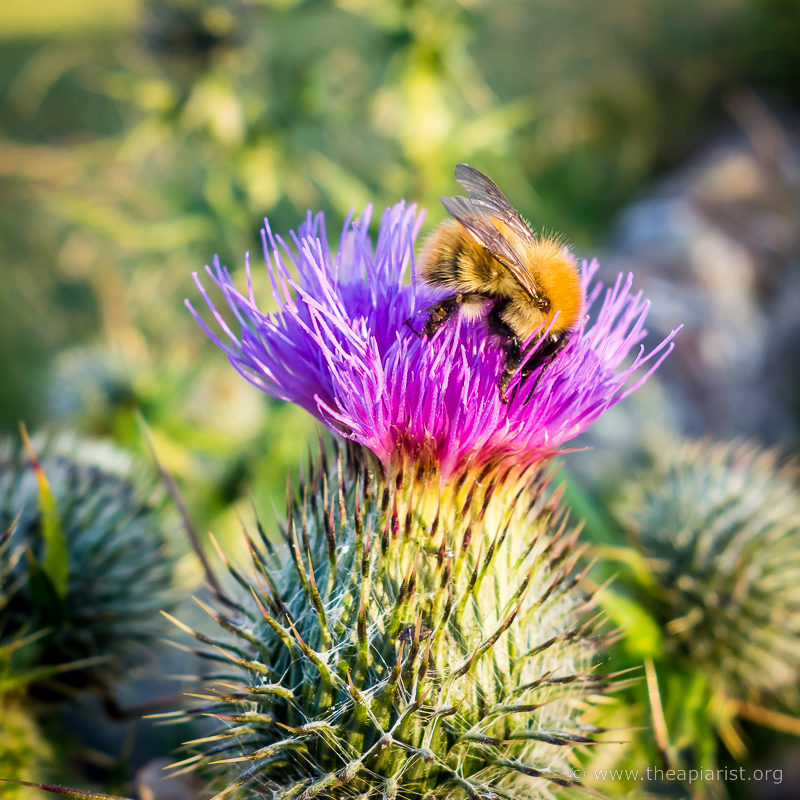

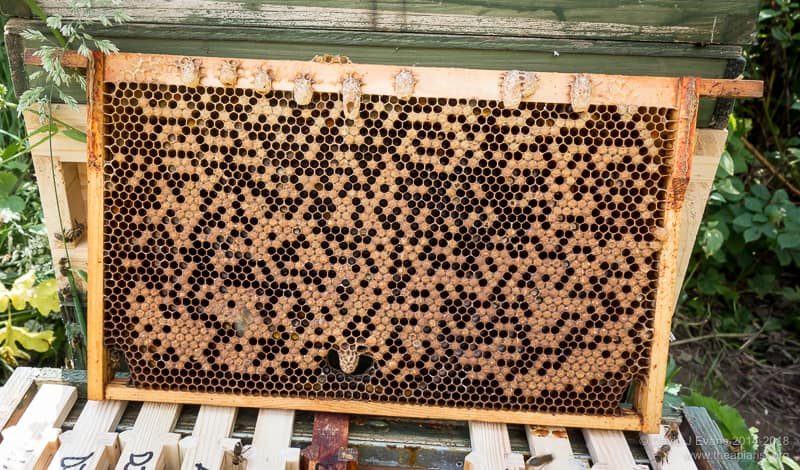
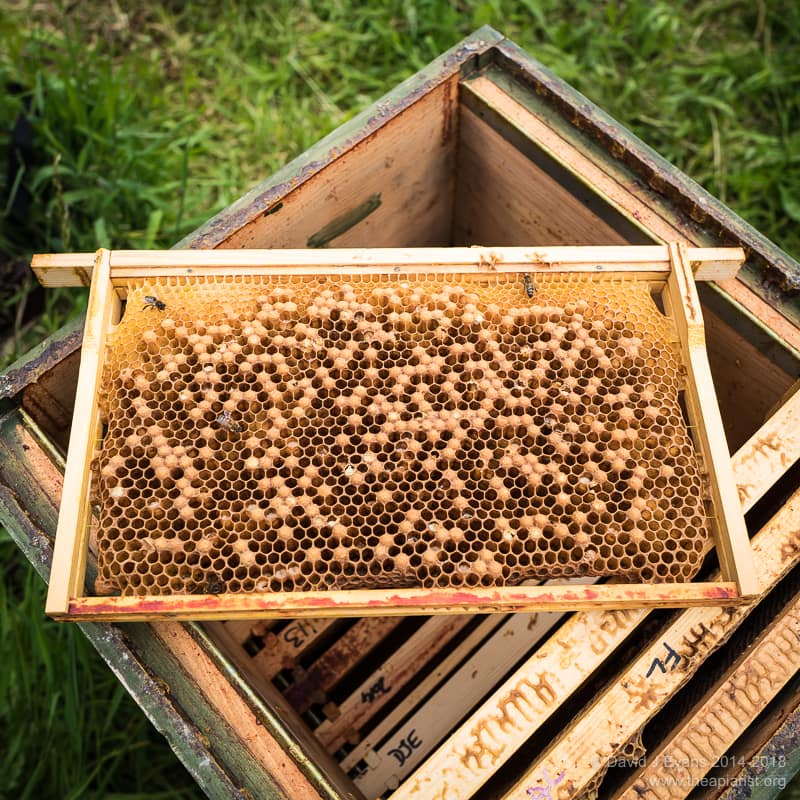
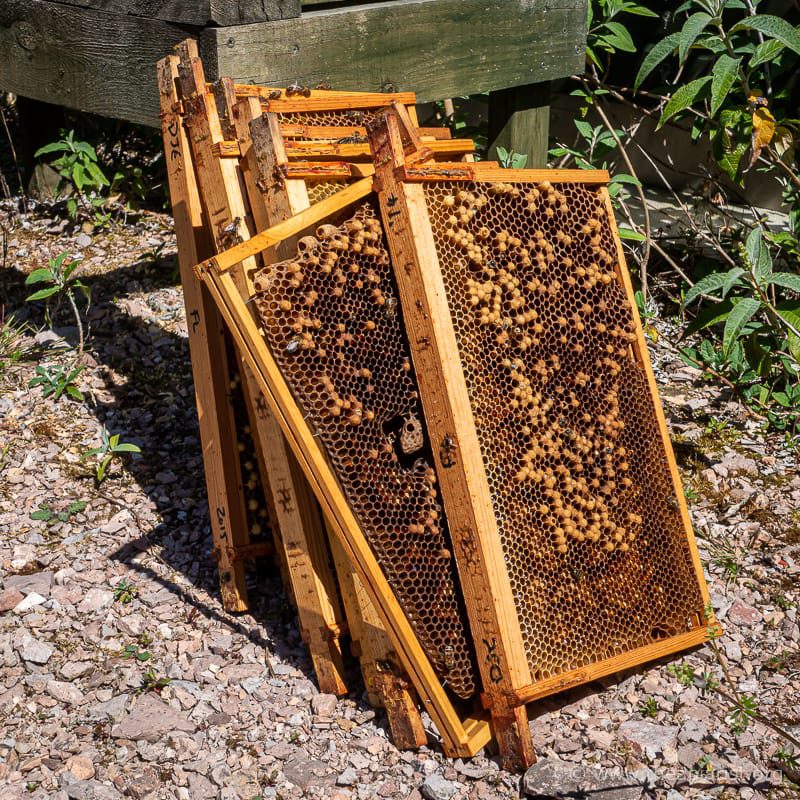
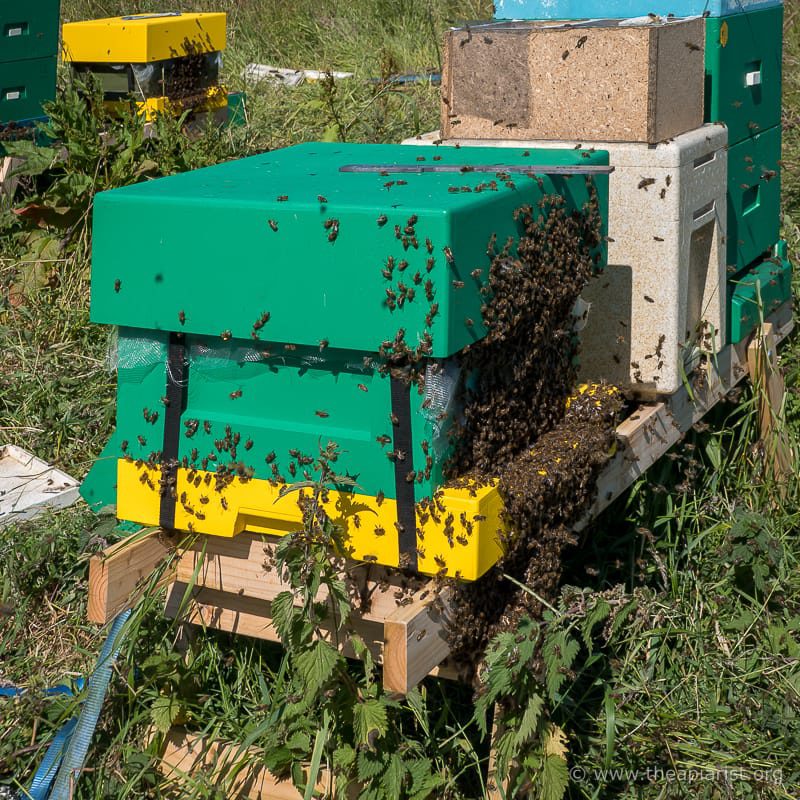
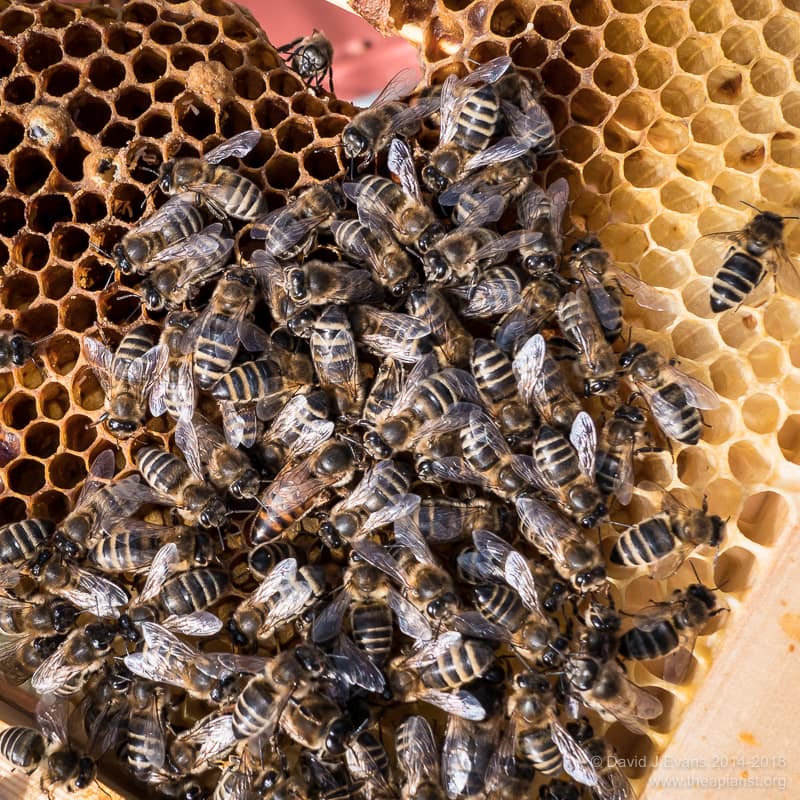
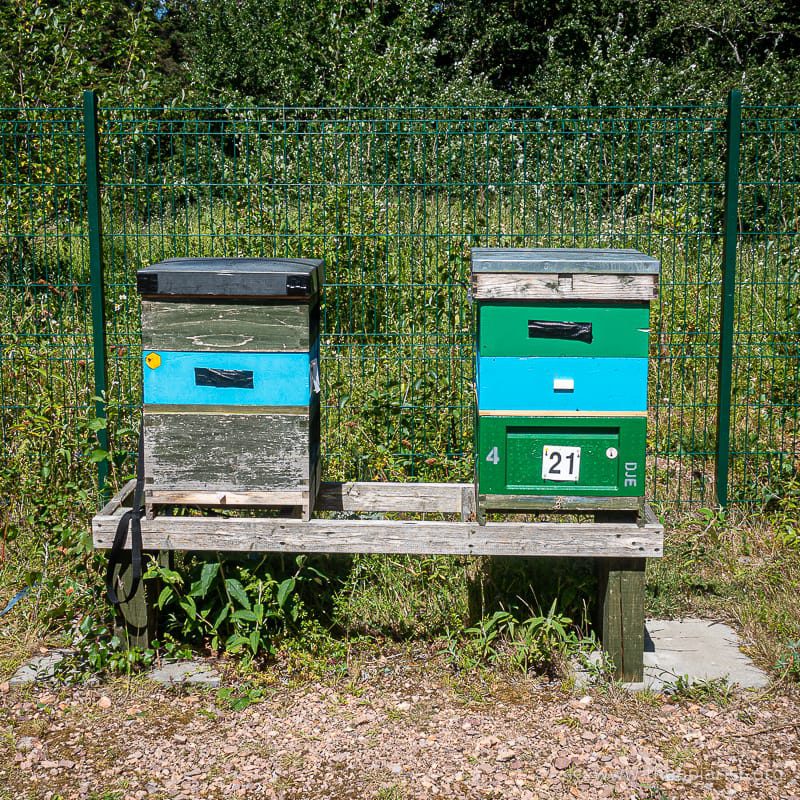
Join the discussion ...